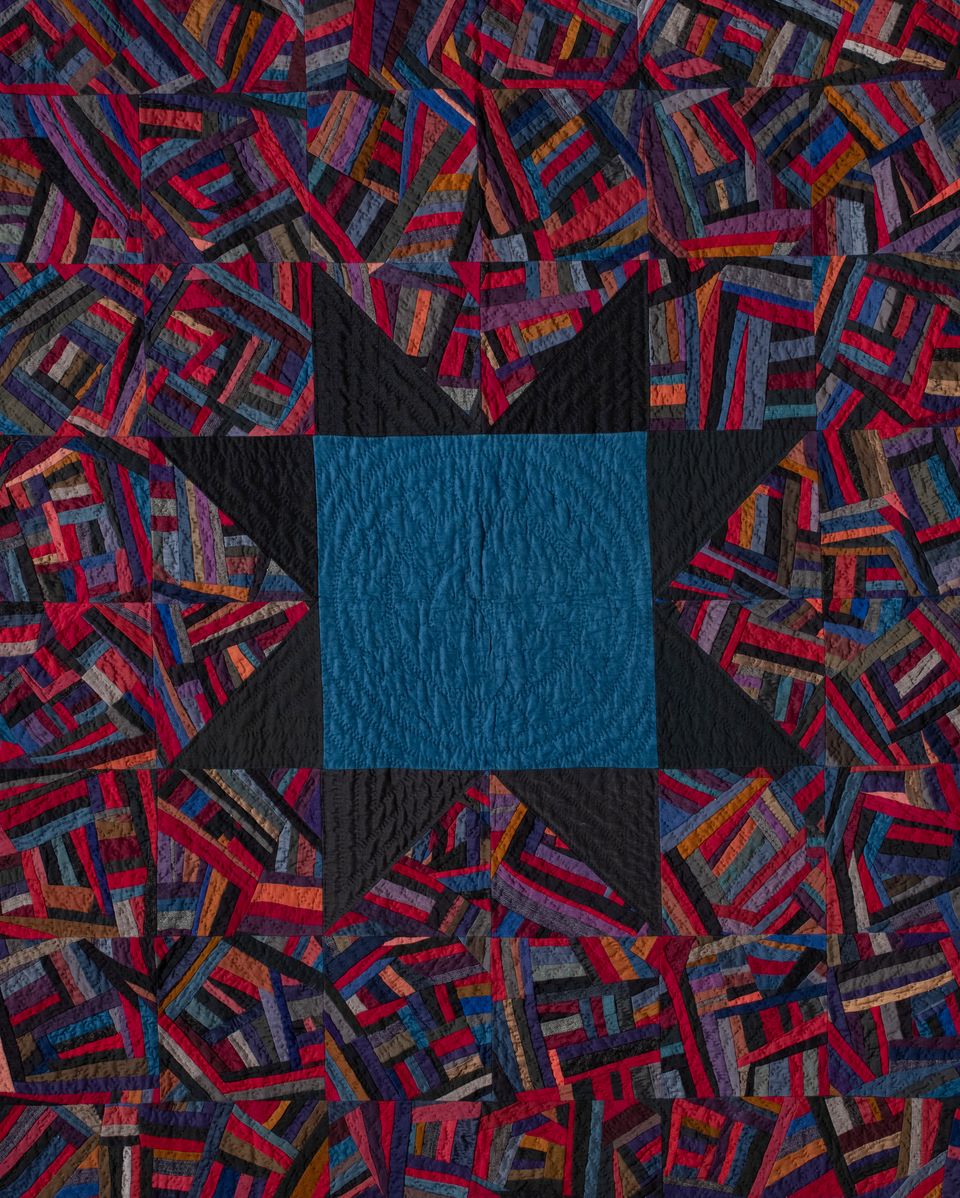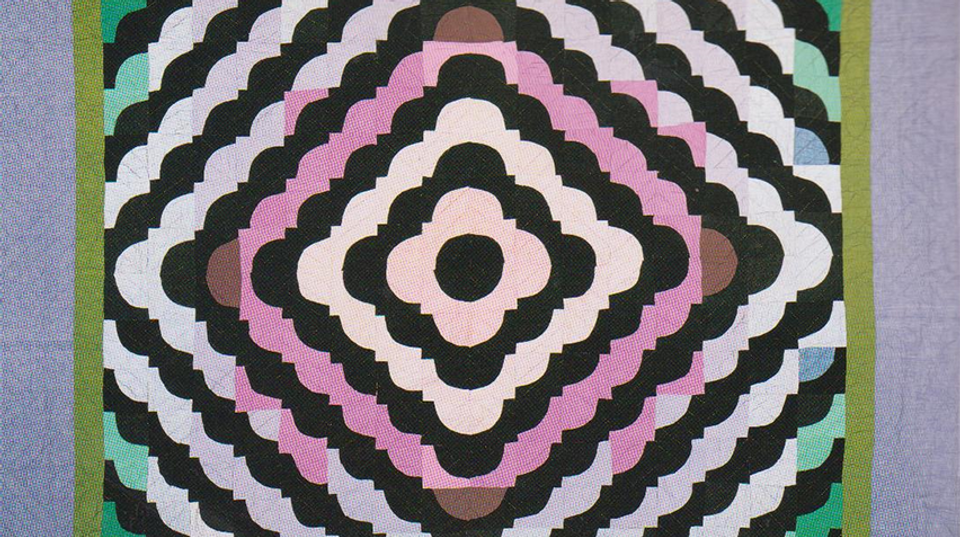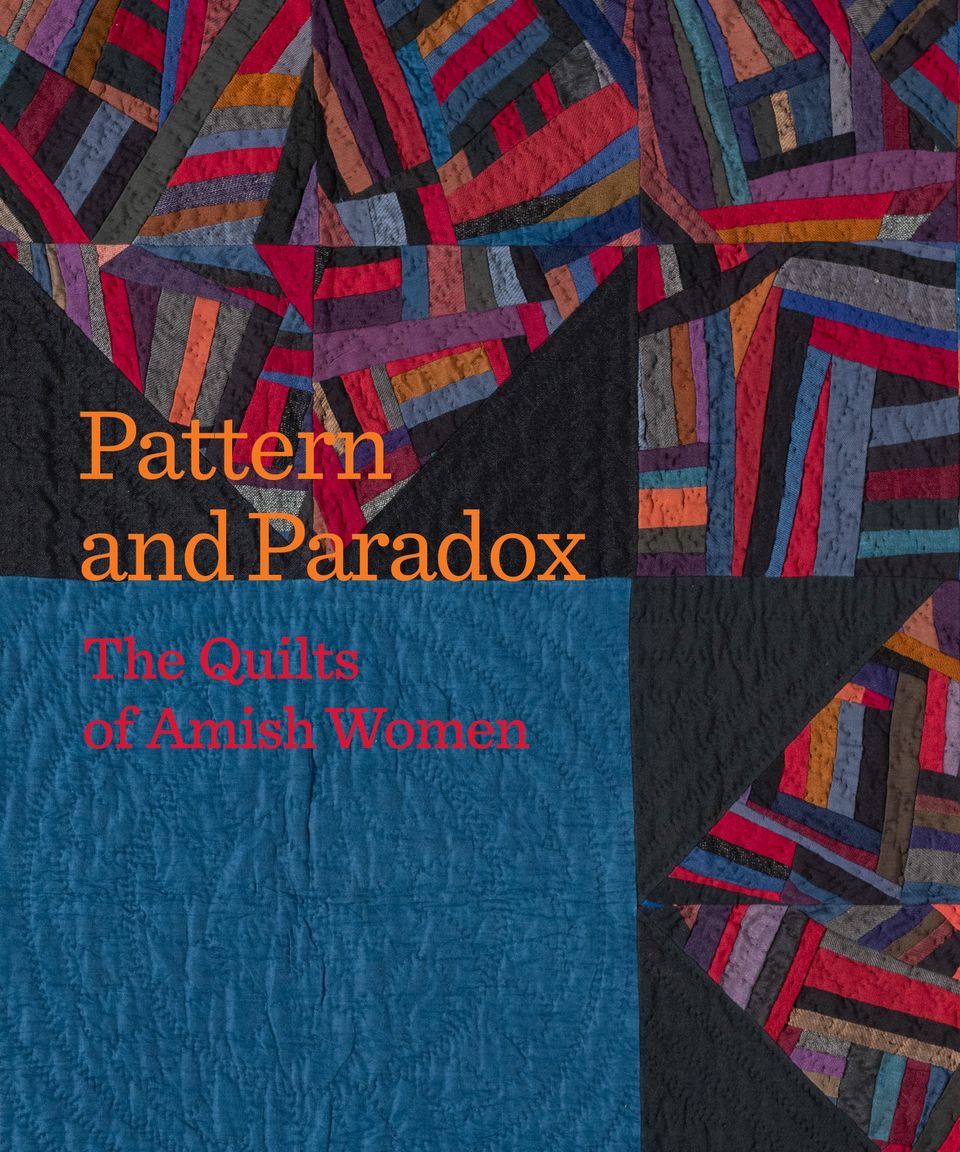Pattern and Paradox: The Quilts of Amish Women

Unidentified Maker, Crazy Star; ca. 1920, Arthur, Illinois, cotton and wool; 74 x 63 ½ in. (detail), Collection of Faith and Stephen Brown, Promised gift to the Smithsonian American Art Museum
Explore the creative practice of Amish quilters in the United States. Pattern and Paradox: The Quilts of Amish Women looks beyond quilting as a utilitarian practice. It reveals historical quilting among the Amish as an aesthetic endeavor that walked a line between cultural and individual expression. The quilts paradoxically twin the plain with the spectacular, tradition with innovation, and a dismissal of personal pride with objects often seen as extraordinary artworks.
Description
In the late nineteenth century, Amish women adopted an artform already established within the larger American culture and made it distinctly their own, developing community and familial preferences, with women sharing work, skills, and patterns. The quilts in Pattern and Paradox were all made between 1880 and 1950 in communities united by faith, values of conformity and humility, and a rejection of “worldly” society. No specific guidelines governed quilt patterns or colors, so Amish women explored an uncharted territory, pushing cultural limitations by innovating within a community that values adherence to rules. Styles, patterns, and color preferences eventually varied and distinguished the various settlements, but it was the local quilters who drove and set the standards.
When Amish quilts traveled into the non-Amish world in the late twentieth century, they developed a dual identity: part icon of Amish culture, part abstract artwork, with art enthusiasts embracing them in part due to a perceived resemblance to modern paintings. By the mid twentieth century, Amish quilts were increasingly being shown in museums. As the art world embraced the striking color combinations and inventive patterning of Amish quilts, the Amish became uneasy for having made and possessing museum-worthy, valuable artworks. Consequently, Amish families began to divest themselves of the quilts that had captivated the art world and consumer culture alike. Some rejected the “old dark quilts” and shifted to lighter and brighter colors for their own quilts. Others continued the older ways, and many Amish women began making quilts as a source of income.
Although vintage quilts remain among the most recognized manifestations of Amish culture, they represent the historical, localized trends of only a finite period from a living and changing culture. Pattern and Paradox celebrates the quilts, the women who made them, and considers their unique role in American art today, roughly a century after the quilts in this collection were made.
The exhibition celebrates a major gift of Amish quilts to the museum by Faith and Stephen Brown. They began collecting quilts in 1977, four years after encountering Amish quilts for the first time at the Smithsonian American Art Museum’s Renwick Gallery. The 50 quilts featured in Pattern and Paradox include 39 from the museum’s collection and 11 promised gifts. Around 100 additional quilts from the Browns’ exemplary collection are promised to the museum as a bequest.
The exhibition is organized by Leslie Umberger, curator of folk and self-taught art and Virginia Mecklenburg, senior curator, with support from Anne Hyland, curatorial assistant. Janneken Smucker, who is a fifth generation Mennonite quiltmaker of Amish Mennonite heritage, a cultural historian, and a professor of history at West Chester University, is primary author of the exhibition catalogue and contributed to the exhibition.
Visiting Information
Publications
Videos
Credit
Pattern and Paradox: The Quilts of Amish Women is organized by the Smithsonian American Art Museum. Generous support has been provided by Faith and Stephen Brown, Billings and John Cay, Barbara Coffey Endowment, and the Ellsworth Kelly Foundation. This exhibition received federal support from the Smithsonian American Women’s History Initiative Pool, administered by the Smithsonian American Women’s History Museum, and from the Smithsonian Collections Care Initiative, administered by the National Collections Program.
SAAM Stories
















